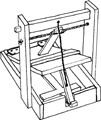Vertebrate Pest Conference: Proceedings

Vertebrate Pest Conference Proceedings: 15th (1992)
Date of this Version
March 1992
Document Type
Article
Abstract
Aversive agents are proposed as potential additives to rodenticides to increase selectivity to the target species. Examples of various aversive agent categories are given, including odorants, tastants, and emetics, with examples of evaluations. Tastant additives have been found that do not interfere with rodenticidal efficacy. Denatonium benzoate (commercially available as Bitrex®) is an intensely bitter but non-toxic substance, being increasingly used to adulterate common household materials to reduce the potential risks involved with accidental exposures. No known prior research results have been published concerning the incorporation of Bitrex in rodenticides. Rate determination studies utilizing different rodenticidal formulations were conducted. A Bitrex level of 10 ppm was well accepted by wild commensal rats and mice in laboratory tests of brodifacoum pellet and wax block formulations (TALON®, KLERAT® Rodenticides). Bait samples with this level of Bitrex (without anticoagulant) were evaluated in a human taste panel study. Samples with Bitrex were found to show significantly greater average rejection by the panel than similar samples without Bitrex. Field trial results are reviewed, which verified the efficacy of Bitrexcontaining commensal rodenticides. The potential role of Bitrex or similar taste deterrents as rodenticide additives is considered opposite accidental toxicant exposure statistics, and perceptions relating to rodenticides and other pesticides.

